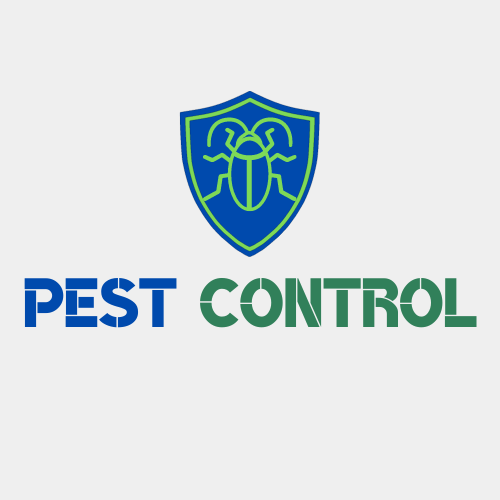Effective Pest Control Strategies for Santa Mónica, Juárez
In today’s rapidly evolving world, where urbanization and industrial agriculture continue to expand, pest control has emerged as an essential component of maintaining healthy living conditions and sustainable farming practices. In places like 67286 Santa Mónica, Juárez, where both residential and agricultural activities flourish, understanding pest control strategies becomes crucial. This article will delve into various practices, including the inspection of shipment areas for pests, partnering with clients to identify rodent risk factors, and the importance of encouraging waste reduction to limit pest attraction. Additionally, we will explore the safe use of rodenticides and the promotion of pest-resistant crop varieties in industrial agriculture.
Inspection of Shipment Areas for Pests
One of the primary methods used for effective pest control in Santa Mónica is the regular inspection of shipment areas. These locations are vital as they often become entry points for pests like rodents, insects, and other unwanted creatures. Upon the arrival of goods, conducting a thorough examination can reduce the likelihood of pest outbreaks. Trained pest control professionals can quickly identify signs of infestation, such as droppings, chew marks, or nests, which can prevent the spread of pests to nearby areas.
Pests can transmit diseases, contaminate food supplies, and cause significant damage to property. Therefore, businesses and industries must prioritize regular inspections of shipment areas. Collaborating with pest control experts to implement preventive measures ensures that the integrity of the supply chain remains intact while safeguarding public health and safety.
Reducing the Likelihood of Pest Outbreaks
Preventive strategies are crucial in the fight against pests. By implementing effective pest management systems, businesses and homeowners in Santa Mónica can significantly reduce the likelihood of pest outbreaks. These strategies include:
1. Regular Monitoring: Constant vigilance is vital. Monitoring pest activity allows for timely responses to potential issues. This includes keeping records of pest sightings and population levels to better understand and predict pest behavior.
2. Hygiene Practices: Proper sanitation and hygiene around residential and commercial areas can significantly deter pests. Simple actions, such as sealing food containers and maintaining clean environments, can reduce the attractions that pests typically seek.
3. Proper Waste Management: A critical factor in pest management is effective refuse disposal. Encouraging waste reduction not only minimizes the physical presence of potential food sources for pests but also supports environmental sustainability efforts. Optimizing waste management practices can lead to a more hygienic environment, reducing pest-related risks.
Partnering with Clients to Identify Rodent Risk Factors
A successful pest control program involves more than just extermination; it requires collaboration. Pest control companies in Santa Mónica engage with clients to identify rodent risk factors unique to their situations. Factors such as building designs, landscaping, and waste management practices can significantly impact the likelihood of rodent infestations.
Through comprehensive assessments and open dialogue, pest control providers can offer tailored recommendations to address specific vulnerabilities. This partnership approach fosters a sense of accountability and responsibility among businesses and residents, encouraging them to take an active role in pest prevention.
Safe Use of Rodenticides
While rodenticides can be an effective solution for managing rodent populations, their use must be approached with caution. The safety of not just humans but also pets and beneficial wildlife should be a priority. In Santa Mónica, the emphasis is placed on the safe use of rodenticides by adhering to guidelines set forth by regulatory agencies and using products that minimize risks.
Professionals are trained on the correct application methods, dosage, and placement of these substances to decrease the chances of unintended harm. Integrated Pest Management (IPM) philosophies are encouraged, where rodenticides are used only as last resorts after other non-chemical control measures have been implemented.
Encouraging Pest-Resistant Crop Varieties in Industrial Agriculture
In the realm of industrial agriculture, pest control goes beyond traditional methods and embraces innovation. One progressive approach gaining traction in Santa Mónica is the use of pest-resistant crop varieties. This strategy involves cultivating plants that are genetically predisposed to resist pest infestations, leading to reduced reliance on chemical intervention.
By encouraging the adoption of pest-resistant varieties, agricultural producers can foster healthier ecosystems and improve yield stability. Research institutions and agricultural extension services can collaborate with farmers to provide education and resources about these advanced cultivation techniques. Ultimately, promoting pest-resistant crops contributes to sustainable agricultural practices and improves food security.
A Proactive Approach to Pest Control
The success of pest control measures in Santa Mónica, Juárez hinges on understanding the ecosystem and changing pest dynamics. Proactive engagement with industries, businesses, and residents will ensure that comprehensive pest management strategies become deeply embedded into community practices.
Education is a powerful tool in empowering families and business owners to make informed decisions regarding pest management. Workshops, seminars, and printed materials can provide essential knowledge on pest behavior, prevention techniques, and sustainable practices that minimize risks.
Conclusion
Pest control is a multifaceted issue requiring a cohesive strategy tailored to the needs of Santa Mónica, Juárez. Through the diligent inspection of shipment areas, a proactive approach to monitoring pest activity, safe usage of rodenticides, and the promotion of sustainable practices such as pest-resistant crop varieties, we stand a better chance of effectively managing pests and safeguarding public health.
The collaboration between pest control professionals and the community is crucial. It creates a holistic approach that not only addresses existing pest issues but also prevents future outbreaks. By fostering these relationships and prioritizing sustainable methods, we can navigate the challenges of pest management and create a safer, healthier environment for all residents.
